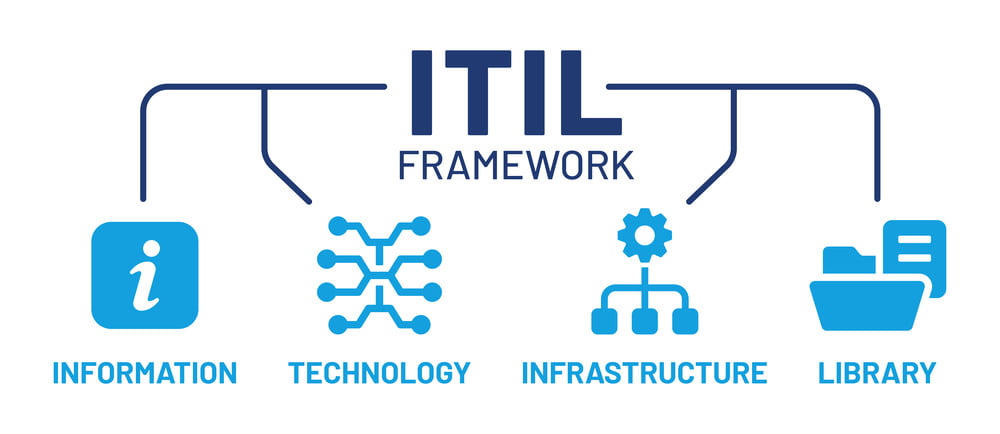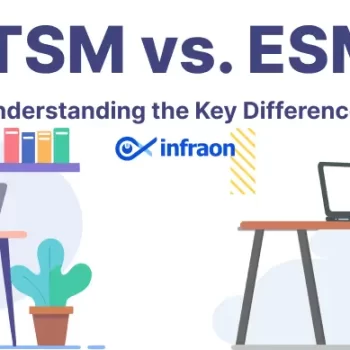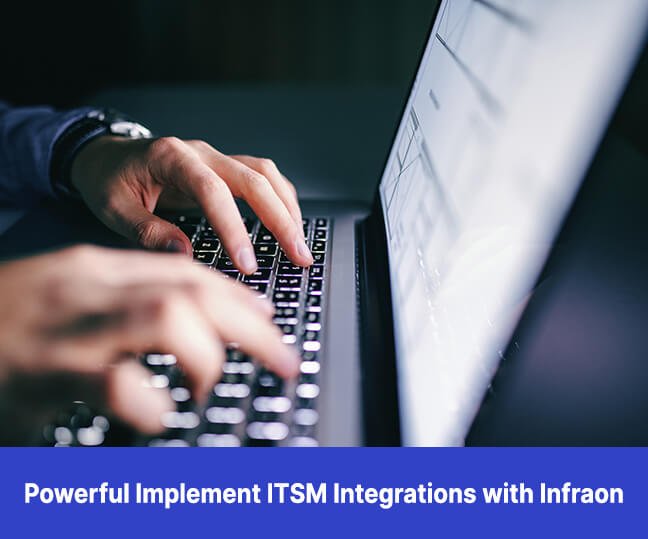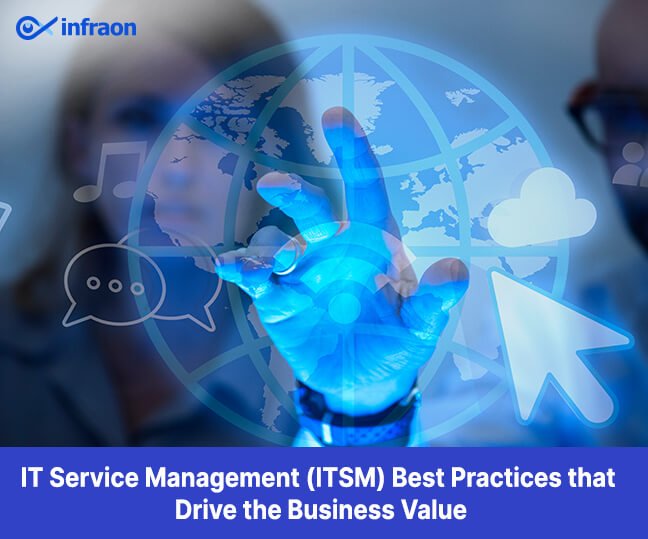Has the IT industry seen a substantial transformation in recent years, and what has been the driving force behind it? In the past, ITSM played a pivotal role in governing IT operations, with a strong emphasis on the systematic coordination of processes to ensure the adequate provision of IT services, all within the framework of established protocols. This thorough approach was a cornerstone for upholding stability and reliability in technology’s constantly changing and evolving realm.
In the ever-changing domain of ITSM, two prominent methodologies, ITIL and Agile, stand at the forefront. Each method contributes distinct principles, practices, and philosophies to optimize ITSM processes and elevate overall service quality. The decision between these two technologies holds substantial importance, as it can profoundly impact an organization’s ability to excel in ITSM. In this blog, you’ll explore the evolution of DevOps and conduct a comprehensive assessment of its relevance to ITIL vs. agile in the quest for ITSM excellence.
Related blog: What are ITIL and ITSM?
Origins of an IT Service Management and Agile – ITIL vs Agile:
The origins of agile and ITSM can be traced back to different eras and contexts, each addressing specific needs and challenges in the IT and software development world. These two approaches have become subjects of comparison, particularly when considering their adoption in modern IT organizations.

Explore ITSM:
The origins of ITSM can be traced back to the late 20th century when organizations began to recognize the need for structured and standardized approaches to managing their IT services and infrastructure. Several vital developments contributed to the creation of ITSM, and it’s important to note the distinctions and comparisons with agile:
- The Introduction of ITIL (1980s) – ITIL vs Agile: The UK government developed ITIL in the 1980s to respond to the growing reliance on IT in businesses and government organizations. ITIL provided a structured framework for managing IT services, focusing on best service delivery and support practices. Unlike agile’s emphasis on adaptability and speed, ITIL prioritizes stability, reliability, and adherence to established protocols.
- ISO/IEC 20000 Standard (2005): The ISO/IEC 20000 standard for IT service management further formalized ITSM practices internationally. It provided a benchmark for organizations to assess their ITSM processes and demonstrate their commitment to quality IT service delivery. This standardization aligns with ITIL’s principles of structured processes and governance.
- Industry Regulation and Compliance: As industries are increasingly regulated, ITSM practices become essential for ensuring compliance with industry standards and regulations. This is especially prominent in sectors like healthcare and finance, where adherence to ITSM processes is critical. Agile, while flexible, may not provide the governance and compliance required in regulated industries.
- Service-oriented Architecture: The adoption of service-oriented architecture in the 2000s highlighted the importance of managing IT services as distinct, reusable components. ITSM practices became instrumental in governing and optimizing these services, while agile methodologies primarily focus on software development processes
Origins of Agile:
Agile methodologies emerged in the early 2000s as a response to the drawbacks of traditional software development approaches. The agile movement was initiated by a group of software developers who shared a conviction that a superior software development method was needed. Some key milestones and influences in the origins of agile include:

- The Agile Manifesto (2001): A group of software development experts created the Agile Manifesto, which outlined a set of guiding principles for agile software development. These principles prioritize individuals and interactions over tools, working software over documentation, customer collaboration over the negotiation of contracts, and responding to change over following a plan.
- Scrum and Extreme Programming (XP): Scrum, developed by Ken Schwaber and Jeff Sutherland, and Extreme Programming (XP), pioneered by Kent Beck, were among the earliest agile methodologies. Scrum introduced the concept of short, time-boxed development cycles known as “sprints,” while XP emphasized practices like continuous integration, test-driven development, and pair programming.
Agile and ITSM, notably represented by ITIL, have distinct origins and philosophies. It emphasizes adaptability, customer-centricity, and rapid development, making it suitable for projects with changing requirements. In contrast, ITSM, especially ITIL, prioritizes stability, governance, and adherence to established processes, making it ideal for ensuring the reliability and quality of IT services. The choice between the two technologies depends on an organization’s specific needs, industry, and the nature of its projects, with some organizations opting to integrate both to strike a balance between agility and governance.
Agile vs ITSM: Striking the Right Balance for Effective IT Practices
The comparison between agile and ITSM is a common discussion point in IT and software development. These two approaches offer distinct methodologies and philosophies for managing IT services and projects. Here are the key differences and considerations when choosing between Agile and ITSM:
1. Nature and Philosophy:
Agile is a dynamic, customer-centric methodology that responds to the limitations of traditional, plan-driven software development. It prioritizes collaboration, flexibility, and rapid responses to change. Agile is all about delivering value quickly through iterative development and welcomes evolving requirements.
ITSM embraces structured processes and governance to ensure the reliability and stability of IT services. These frameworks focus on delivering consistent, high-quality IT services aligned with business needs while adhering to industry standards and regulations.
2. Key Practices:
Agile methodologies employ short development iterations, daily stand-up meetings, continuous integration, and user story prioritization. Agile encourages cross-functional collaboration among teams.
ITSM practices include managing incidents, changes, problems, service level management, and configuration. These practices provide a structured approach to delivering, managing, and supporting IT services.
3. Approach to Change:
Agile welcomes and expects changes in project requirements. It views change as an opportunity for improvement and adaptation to evolving customer needs.
ITSM is typically more resistant to changes once services are established. Change management processes in ITSM are designed to carefully assess and control modifications to minimize disruptions to service stability.
4. Speed vs. Stability:
Agile prioritizes speed and responsiveness, aiming to deliver working software quickly to meet changing market demands. It thrives in environments where rapid development and innovation are essential.
ITSM emphasizes stability and reliability. It is well-suited for organizations that require rigorous control and predictability to maintain service quality and compliance.
5. Customer Focus:
Agile is highly customer-centric, involving customers and stakeholders throughout the development process to ensure that the delivered software meets their needs and expectations.
While ITSM ultimately serves the business and its customer’s interests, its primary focus is maintaining and managing IT services according to predefined standards and agreements.

In conclusion, agile and ITSM cannot be directly compared due to their distinct purposes and philosophies. When organizations decide between these methodologies, a thoughtful analysis of their particular requirements, industry context, and organizational culture is essential. Rather than an either-or choice, organizations choose integration to leverage the advantages of both approaches. This integration facilitates swifter development while upholding the stability and reliability of IT services, ultimately aligning IT with broader business goals.
ITIL and Agile Integration: Enhancing IT Service Management
In the dynamic IT and software development landscape, combining two methodologies has emerged as a strategic imperative for organizations aiming to excel in the digital age. This integration, often called ITIL and Agile Fusion, is a process-oriented approach with Agile’s flexibility, speed, and customer-centricity. Organizations can leverage the strengths of both approaches to optimize IT service delivery and meet evolving business needs.
Why Combine ITIL and Agile?
- Balancing Structure and Adaptability: ITIL is renowned for its emphasis on structured processes, governance, and service quality, making it for maintaining the reliability and stability of IT services. Conversely, agile thrives on adaptability, iterative development, and rapid responses to change. Integrating ITIL and agile, organizations balance structure and adaptability, ensuring that IT services remain reliable and responsive to dynamic business requirements.
- Enhanced Customer-Centricity: Agile prioritizes customer-centricity, involving customers and stakeholders throughout the development process to ensure that solutions precisely align with user needs. While ultimately serving the business and its customers, ITIL manages IT services within predefined standards and agreements. The integration encourages a customer-focused approach that satisfies users and provides compliant and dependable services.
- Resource Utilization: Agile ITIL optimizes resource allocation by prioritizing work based on business value. Cross-functional teams collaborate seamlessly, reducing reliance on specialized roles. Automation tools simplify repetitive tasks, minimizing manual effort and associated costs. This optimization enables quicker, more cost-effective service delivery.
- Cultivating a Culture of Continuous Improvement: ITIL and Agile promote continuous improvement. Agile encourages teams to reflect on their processes and make iterative enhancements. ITIL includes practices like continual service improvement, where methods are regularly reviewed and refined. Organizations cultivate a culture of perpetual enhancement across the IT service landscape by merging these aspects.
Implementing ITIL and Agile Integration:
To successfully implement the Integration, organizations should consider several key steps:
- Cultural Alignment: Promotes an organizational culture that understands and embraces the principles of both technologies. Encourage collaboration, experimentation, and a shared commitment to continuous improvement.
- Selective Integration: Identify areas where ITIL and agile can complement each other productively. For instance, agile may be best suited for software development projects, while ITIL processes excel in areas like change and incident management.
- Leveraging Automation and Tools: Leverage automation tools to facilitate seamless integration. Automation can assist with code deployment, configuration management, and incident response tasks.
- Continuous Evaluation and Adaptation: Regularly assess the performance of the integrated approach. Solicit feedback from teams and stakeholders on areas for improvement, ensuring ongoing alignment with business objectives.
In conclusion, integrating two methodologies represents a strategic choice for organizations seeking to thrive in the digital era. Harmonizing ITIL’s structured rigor with agile agility without compromising service quality, organizations can deliver IT services that are innovative and responsive but also stable, compliant, and customer-centric. This integration facilitates a holistic approach to IT service management, aligning technology with business objectives and ensuring long-term success in the competitive landscape.
Choosing Between Agile and ITIL (ITSM): Finding the Right Fit for Organization
When managing IT services and projects, organizations often face a critical decision: Should they embrace agile or ITSM, represented by frameworks like ITIL, or perhaps a combination? Each approach offers distinct methodologies and philosophies, catering to different needs and priorities. The following are the factors to be considered to make informed decisions.
- Nature of the Projects: Choose agile when projects demand flexibility, rapid development, and the ability to respond swiftly to changing requirements. It is particularly well-suited for software development initiatives and projects emphasizing innovation and adaptability. On the other hand, consider ITIL when the primary objective revolves around delivering unwavering, stable, and compliant IT services. ITIL shines in environments where the utmost priorities are upholding service quality, ensuring reliability, and adhering rigorously to industry standards and regulations.
- Organizational Culture: Choose agile for a collaborative, experimental, and continuously improving organizational culture. It excels in self-organizing, customer-centric, and adaptable team environments. In contrast, choose ITIL when structured processes, governance, and disciplined service management are preferred, making it suitable for organizations valuing standardized procedures and clear guidelines.
- Project Complexity: Choose agile for projects demanding adaptability and quick response to changing requirements, particularly in complex scenarios. Its iterative approach enables rapid adjustments to evolving needs. Elect for ITIL when projects involve established, mission-critical processes that prioritize stability. ITIL’s structured framework ensures precise control for managing complex services productively.
- Customer-Centricity: Choose agile for projects requiring adaptability and swift responses to changing demands, especially in complex contexts where its iterative approach facilitates rapid adjustments. Opt for ITIL when dealing with projects characterized by established, mission-critical processes prioritizing stability. ITIL’s structured framework provides precise control for efficiently managing complex services, ensuring reliability and consistency.
- Industry and Compliance Requirements: Choose ITIL if the organization operates in regulated industries like healthcare or finance, where adherence to compliance standards is mandatory. ITIL’s emphasis on process control aligns with regulatory requirements.
- Hybrid Approach: Consider adopting a hybrid approach that combines Agile and ITIL, often called Agile ITSM or DevOps with ITIL. This approach balances agility and governance, allowing for faster development while ensuring service stability and reliability.
Agile and ITIL should align with the organization’s needs, industry, and culture. In some cases, strategically integrating both approaches may be the ideal solution to both methodologies’ benefits. Evaluating unique circumstances and objectives is essential for the best decision for an organization’s IT service and project management.
Related blog: What is Problem Management and Other Key ITIL Processes?
Strategic Integration of Agile and ITIL for Organized IT Service Management
Agile and ITIL are distinct frameworks, each with unique strengths and weaknesses. It is known for its flexibility, prioritizing customer satisfaction, and encouraging collaboration, making it ideal for delivering functional software quickly. On the other hand, ITIL provides a structured framework focused on standardizing and elevating IT service quality and performance.
When choosing between these methodologies, several key factors come into play. Organizations must assess their specific needs, project complexity, available resources, and organizational culture. Evaluating these aspects helps align the chosen methodology—agile’s adaptability or ITIL’s structured approach—with the organization’s objectives and capabilities. By carefully considering these critical factors, organizations can make informed decisions, efficiently integrate agile and ITIL principles, and manage IT services and projects to achieve their desired outcomes.



















